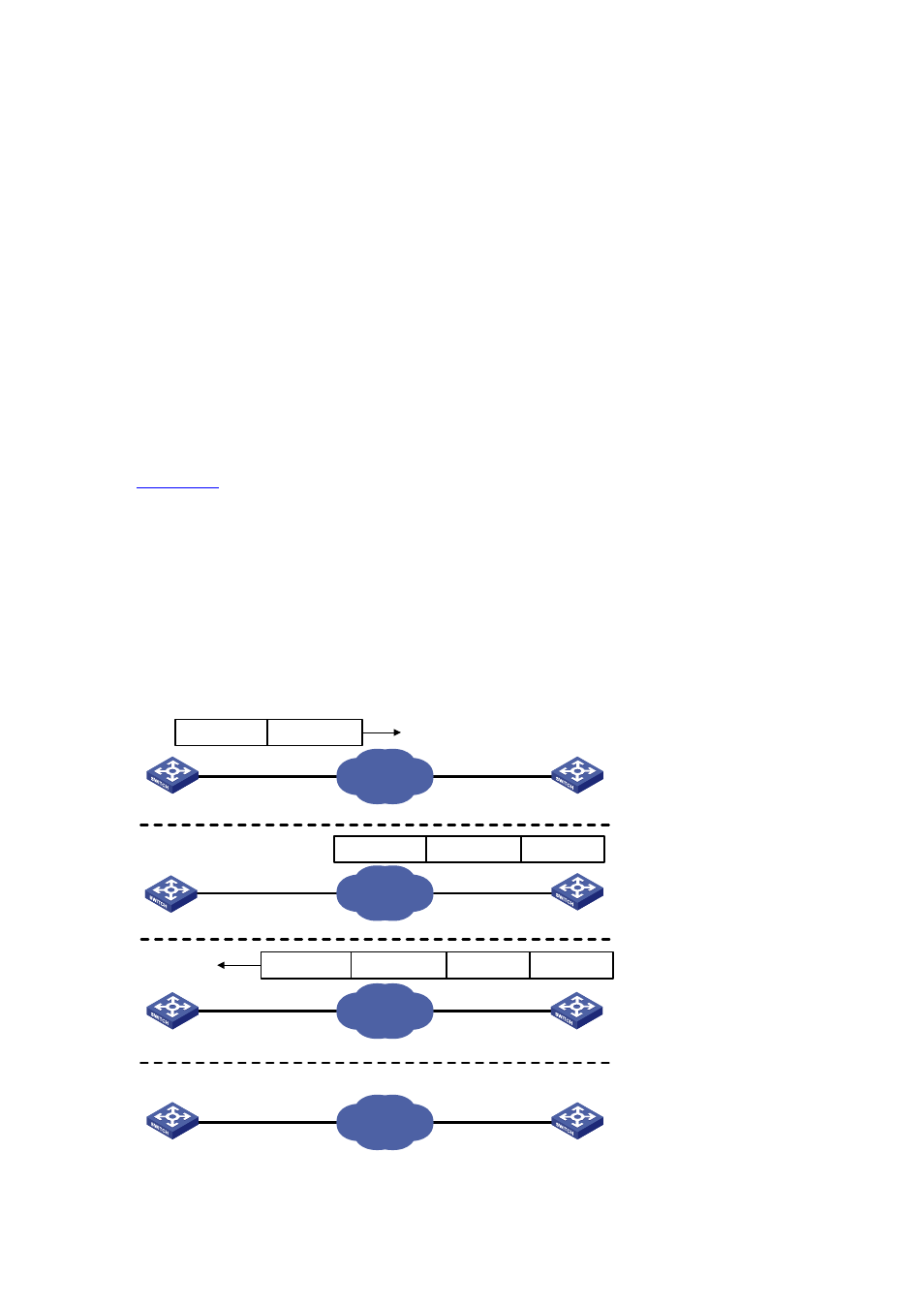How ntp works – H3C Technologies H3C WX6000 Series Access Controllers User Manual
Page 487

54-2
z
All devices must use the same reference clock in a charging system.
z
To implement certain functions, such as scheduled restart of all devices within the network, all
devices must be consistent in timekeeping.
z
When multiple systems process a complex event in cooperation, these systems must use that
same reference clock to ensure the correct execution sequence.
z
For increment backup between a backup server and clients, timekeeping must be synchronized
between the backup server and all the clients.
Advantages of NTP:
z
NTP uses a stratum to describe the clock precision, and is able to synchronize time among all
devices within the network.
z
NTP supports access control and MD5 authentication.
z
NTP can unicast, multicast or broadcast protocol messages.
How NTP Works
shows the basic work flow of NTP. Switch A and Switch B are interconnected over a
network. They have their own independent system clocks, which need to be automatically synchronized
through NTP. For an easy understanding, we assume that:
z
Prior to system clock synchronization between Switch A and Switch B, the clock of Switch A is set
to 10:00:00 am while that of Switch B is set to 11:00:00 am.
z
Switch B is used as the NTP time server, namely Switch A synchronizes its clock to that of Switch
B.
z
It takes 1 second for an NTP message to travel from one switch to the other.
Figure 54-1
Basic work flow of NTP
IP network
IP network
IP network
IP network
Switch B
Switch A
Switch B
Switch A
Switch B
Switch A
Switch B
Switch A
10:00:00 am
11:00:01 am
10:00:00 am
NTP message
10:00:00 am
11:00:01 am
11:00:02 am
NTP message
NTP message
NTP message received at 10:00:03 am
1.
3.
2.
4.